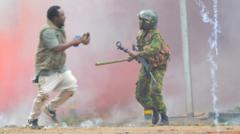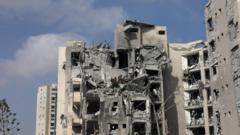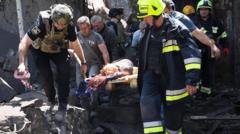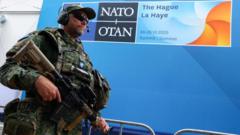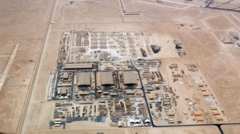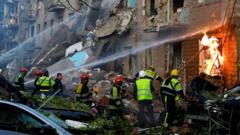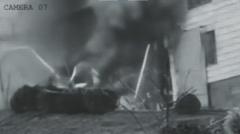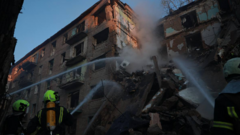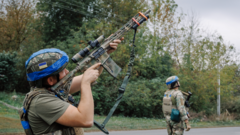With an estimated 45,287 Russian soldiers killed in 2024 alone, the losses indicate a trend of growing fatalities as the war escalates, revealing alarming recruitment tactics and a troubling reality for Moscow.**
Heavy Toll: Russia Experiences Unsustainable Losses in Ukraine Conflict**
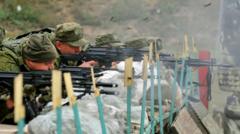
Heavy Toll: Russia Experiences Unsustainable Losses in Ukraine Conflict**
2024 marks a catastrophic year for Russian forces in Ukraine, as casualty figures skyrocket to unprecedented levels.**
2024 has proven to be a devastating year for Russian forces in the ongoing conflict in Ukraine, with casualty figures showing an alarming rise. At least 45,287 Russian soldiers have been reported killed this year, nearly three times the deaths seen in the initial phase of the invasion. As fighting intensifies, especially in critical regions like Bakhmut, the toll on Russian troops has reached unprecedented levels, with the grim realization that Russia has lost approximately 27 soldiers for every kilometer of Ukrainian territory captured.
This dreary assessment was made possible through a collaborative effort between the BBC Russian Service, independent media outlet Mediazona, and dedicated volunteers who analyzed data from military memorials, cemeteries, and obituaries. While they have identified the names of 106,745 Russian soldiers killed since the war began, estimates on the total death toll range from 164,223 to 237,211, as the actual numbers are thought to be considerably higher.
A particularly harrowing day for Russian casualties occurred on February 20, 2024, when a missile strike on a training ground in occupied Donetsk resulted in the deaths of 65 servicemen, including their commander. The tragic incident highlights not only the vulnerability of Russian troops but also the grim reality of their recruitment practices. Those killed, such as 22-year-old Aldar Bairov and 31-year-old Okhunjon Rustamov, exemplified the disparate backgrounds of soldiers drawn into this conflict, ranging from conscripts to volunteers.
In 2024, the death toll has remained consistently high, influenced by a series of bloody battles across different fronts, including Avdiivka and Robotyne. Military experts suggest that Russian tactics have contributed to the steep rise in casualties, as forces are driven to undertake repeated assaults with minimal training and preparation, significantly reducing their chances of survival.
Despite these staggering losses, Russia has reportedly found ways to bolster their ranks through increased recruitment, particularly among volunteers—individuals who often sign on to avoid criminal charges or benefit from increased financial incentives. Reports indicate that volunteer casualties are becoming the most significant demographic among Russian military losses, raising troubling questions about the wellbeing of these hastily trained soldiers.
The impact of the ongoing conflict on the families of casualties is devastating and far-reaching. With regions like Bashkortostan witnessing the highest number of confirmed deaths—many from rural backgrounds with little military experience—each loss has profound implications for community stability. Current calculations around Russian fatalities reflect just the tip of the iceberg, as the true toll continues to elude comprehensive assessment due to the ongoing nature of the conflict and the logistical challenges of recovering fallen soldiers.
As the conflict grinds on, both Moscow and observers globally must grapple with the realities of warfare, where the price paid in human lives compounds the grave costs of territorial ambition and military strategy.

